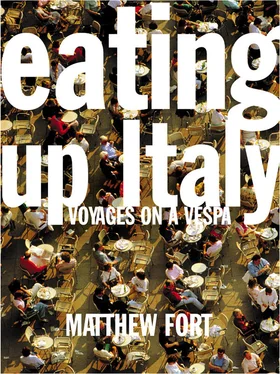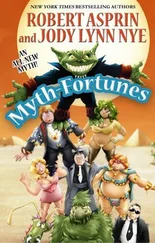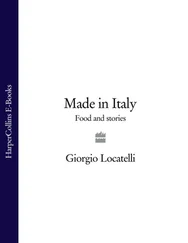Even Signor Familiare admitted that the gastronomic possibilities of bergamot were limited, although it had found its way into the food chain in the form of bergamino and bergamotto, and via them into ice creams and sorbets. It also has a curious connection with British culture through Earl Grey tea, which is perfumed with bergamot (a tea, incidentally, which is more likely to have been the product of some marketing man’s imagination than the favourite tipple of Earl Grey, an inconspicuous Prime Minister between 1830 and 1834). Otherwise the flesh of the fruit goes for agricultural feed, the thick pith to make pectin and the oils to the perfume industry.
‘But all my production,’ he finished proudly, ‘goes to Manchester for Body Shop products,’ and he showed me a photo of the Body Shop’s founder Anita Roddick standing among his trees.
From Melito to Manchester – it was difficult to associate the two in my imagination; but then it struck me that it is the true nature of commerce to act as a link between improbable parties and places. The association was certainly no more improbable than my arrival here from the cheery purlieus of Acton, a less than fashionable suburb of London. I wondered what other curious conjunctions this odyssey through Italy would bring me.
I have been in love with Italy for most of my life. It’s an affair that began in 1958, when I was eleven, and we took a family holiday at Cervia on the Adriatic coast. I remember little of the cultural side of things – the endless churches and monasteries around which we were dragged, or the celebrated mosaics and frescos that seemed to clutter up every available surface. On the other hand, I can still taste the ice creams with which we were bribed every step of the way, and visualise the vast cold buffets, complete with swans sculpted from ice, that appeared in the dining room of the Hotel Mare e Pineta at lunchtime each Thursday, and the grapes, slices of melon and segments of orange coated in light, friable caramel that we bought from a vendor on the beach who cried out ‘A-ro-via gelati e vitamine B-B’, brushing away swarms of wasps as he wandered past.
I consummated the affair as often as I could thereafter, but perhaps its intensity was maintained by the short duration of my visits. A question always lingered in my mind as to whether what I felt was true love or merely another Englishman’s infatuation with sunlight, landscape, food, wine and people seen through the distorting glass of sentimentality and self-delusion. So this journey, from the very southernmost tip of the country to Turin, eating as I went, was to be an attempt to sort through the waffle of interior monologue. Food, in all its forms, was the medium through which I would try to understand this beautiful and baffling country. Of course the journey had a certain sybaritic appeal, too. Quite a lot of sybaritic appeal, in point of fact.
I had considered walking, or doing the trip on a bicycle, but dismissed them as being impractical. A car? Too boring, too conventional, too … middle-aged. No, a scooter, a classic Vespa, design icon, landmark of Italian culture, sound, sensible and slowish. A voyage of exploration on a Vespa – that was the thing. It was true that I had flunked my road test in England for ‘failing to maintain sufficient forward momentum’, or ‘Not going bloody fast enough’, as my taciturn tutor, John, had put it, but speed was not of the essence as far as I was concerned. Anyway, the Italians did not seem to worry unduly about road tests for machines under 150cc, and I wasn’t going to go near anything with that kind of zip.
To make things yet more practical, I had arranged to do the journey in three sections, allotting one month to each. The first would take me from the tip of Calabria to Naples; the second from Naples to Ancona; and the third from Ancona to Turin. Why stop at Turin? Well, the theoretical justification was that this route, from south to north, described the course of the unification of Italy.
That was why I had come to Melito di Porto Salvo. It was here that Giuseppe Garibaldi landed in 1860 with 10,000 men after his conquest of Sicily. He progressed northwards up the western coast, routing the forces of the reactionary Bourbons as he went. In fact, I had taken lunch in the dining room of the Casina dei Mille, un ristorante con alloggio, a handsome, imposing, cream-painted house that had served as Garibaldi’s headquarters.
The building had been preserved as a monument to the great man by the owner, Signor Romeo. The rooms had a certain gloomy magnificence: one barrel-vaulted, the other square; both had a red-brick ceiling complementing a brown tiled floor, and the walls of each were hung with various pictures, photographs of the great man and documents pertinent to his life. In most pictures, his distinctive dome-like forehead had an imposing nobility, in spite of the receding hair being brushed up and over. The eyes were quite narrow and slightly slanted. Much of the lower face was hidden beneath a beard, in different lengths in different photographs, but always conveying the same bushy masculinity. Even in apparent repose, he exuded tremendous energy. The force of his personality was palpable, his sense of his own rightness incontrovertible. I couldn’t help feeling that, inspiring beyond measure though he was in warfare, what a pain in the neck he must have been at other times.
For all its place in history, Melito di Porto Salvo was a queer place, devoid of any charm or notable feature that I could make out. On the town’s seaward side, a shingle beach, on which litter, detritus and brilliant wild flowers mingled with louche promiscuity, gingerly skirted the edge of the town. Beyond that, the flat grey sea and the flat grey coastal plain merged one into the other. The only thing distinguishing the two was the fact that, out at sea, there was no scab of indiscriminate construction of depressingly tawdry buildings. It may not be the most distinguished piece of coastline in the world, but any charm it might have had had been completely buried beneath a haphazard mish-mash of ribbon development, the consequence of bureaucratic corruption and the absence of civic control. The sad, transitory nature of the coastal plain was emphasised by the brooding magnificence of the tree-covered crags of the Aspromonte, the southernmost tip of the Apennine range, which could be seen rising up further inland.
I found it curious that, the Casina aside, no effort seemed to have been made to commemorate Melito’s place in history. There was no Garibaldi visitor centre, no Garibaldi heritage trail, no shops selling replica red shirts or mugs celebrating 1860, fake powder horns or plastic muzzle-loading rifles or memorabilia medallions. In fact, there was nothing to indicate that the first practical step towards the unification of Italy, which I thought might have merited a bit of razzmatazz and celebration, had been taken here, in this unkempt, dusty, down-at-heel town.
Eventually I tracked down a monument of a kind, just off a dirt road that ran along the shore. Its place was marked by a concrete pinnacle of peculiar hideousness, which stood on a low mound covered with trashy, 1950s crazy-paving ceramics. There was a stone set into the earth with an orotund inscription, much of which was lost among the cracks and weeds growing over it. It was a desolate spot. The wind blew stiffly, hissing through the sea thistle, gorse and mimosa that grew in clumps on either side of the monument, causing the mimosas to rock their yellow heads vigorously, and any number of plastic bags trapped between the stones and haphazard detritus, rusting cans and cannelloni of concrete piping to flap back and forth.
I wondered how far Italy was really unified in any social or political sense. Its post-unification history had been chequered to say the least, but the total neglect here of someone whom I had always thought of as one of the country’s true heroes struck me as very rum. Perhaps food might be a more accurate gauge of Italy’s unity. Pasta, prosciutto, pecorino (the ubiquitous sheep’s cheese) – those, surely, were universally recognised from Melito to Milan. Well, I would find out. I headed back up the desecrated coast to Reggio di Calabria beneath lowering skies.
Читать дальше












